Banquette seating is everywhere, it lines up in restaurants and cafes, can be seen in hip hotels and in the homes of celebrities.
A style that has ebbed and flowed since the early 20th century, it’s back in vogue in a big way and it’s beautiful to behold but needs some careful consideration, especially in more modest-sized homes.
Part of the reason for the popularity of banquettes now is rooted in the practical. They are a really smart way to incorporate storage and seating into the one space, they let you push a dining table back when not in use and save space.
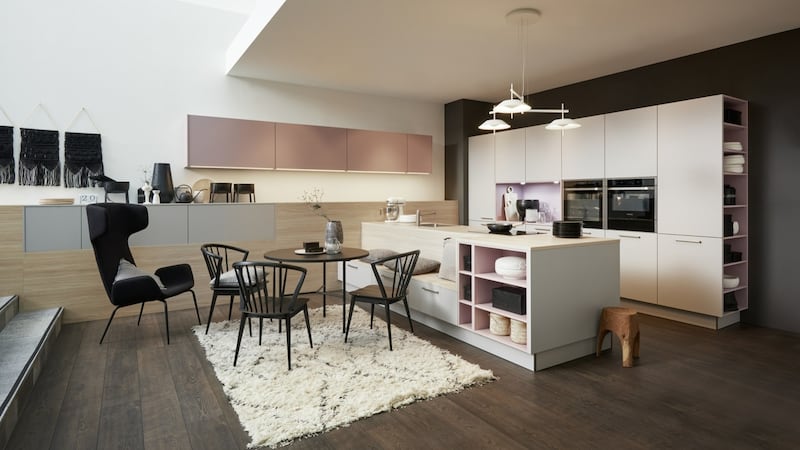
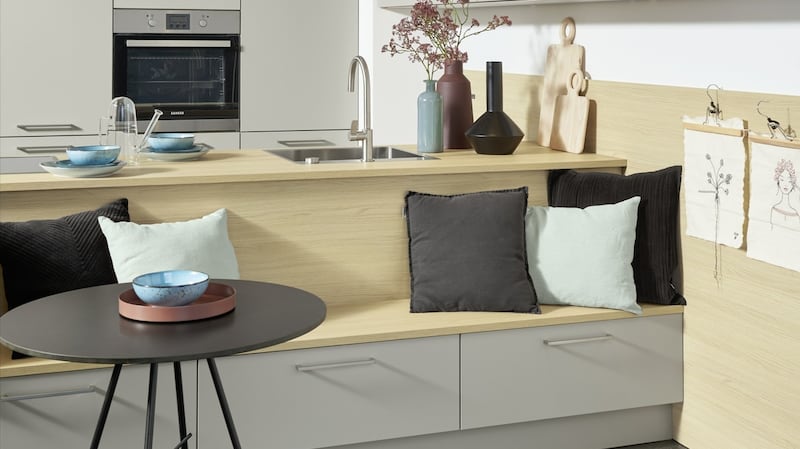
Being an upholstered seat, the banquette offers great comfort too. The hospitality sector loves its tidy look and its ability to squeeze in another one or two punters in the same floor space. If you find yourself having to suck in your stomach to squeeze past your dining chairs, it may just be the solution you need.
But there are considerations to factor in, cautions John O’Connell, whose eponymous furniture-making firm has built thousands of banquettes for hospitality and homes. He even tries to talk some homeowners out of the idea because it can become a big block of colour that dominates a modest-sized room.
“Fixed seating can end up looking quite bulky unless it is very well designed and you have the space to accommodate it,” he says. He helps customers to visualise their idea by first designing a template in cardboard and demonstrates the volume it will take up by bringing the cardboard and long stools onto site.
“I put the cardboard over the stools at the height the seating and table will be at.” People can see how the final form will look. Prices vary widely, from entry level €470, ex VAT, per linear metre to a recent curved shape banquette upholstered in aniline leather in a shell style, that can accommodate about six for €6,500, ex VAT.
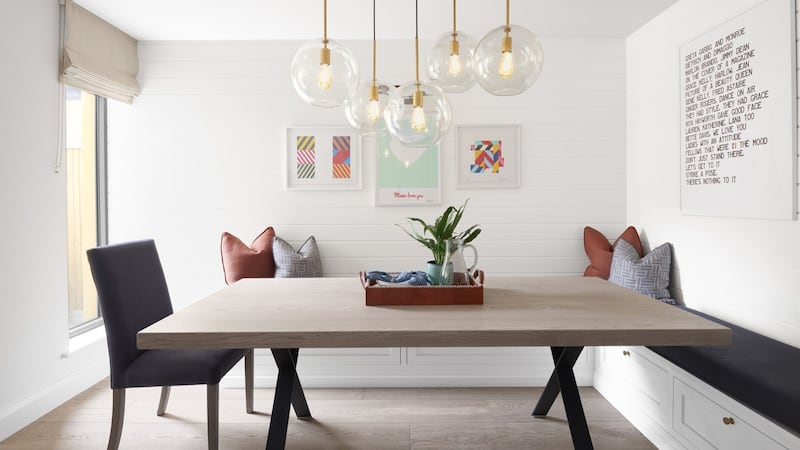
“We get asked about this kind of seating all the time,” says Arlene McIntyre of Ventura Design. “It’s such a smart use of space. The volume within the seat can double as storage, for toys if you have small kids, for special occasion tableware and linen or even as a repository for cook books, if you don’t want them all on show.”
One of her clients, Vogue Williams, went for a very simple but cool-looking L-shape that allows you to install a sizeable table and gather a gang around it.
“It’s a great look to work into a corner and means you can accommodate up to about 10 people instead of say six with just a table and chairs,” Arlene says. It doesn’t have any back cushions, bar a few judiciously positioned scatter cushions and will take the dog’s abuse that a household with small kids demands – perfect for Williams, her husband, Spencer Matthews, and their kids to have family round having recently relocated to Howth from London.
Neville Knott, head of interior design at TU Dublin, says this style of seating should never have a straight back but rather a sloped back, with a gradient of about 30 degrees.
“Otherwise it will feel like a church pew,” he says.
He also says it needs a good thick seat cushion and deeply upholstered back to really feel comfortable. The elegantly deep-button leather upholstered areas on the banquette seating in Bar Josephine in Paris Hotel Lutetia, by architect Jean-Michel Wilmotte, is one smart way to add additional back padding.
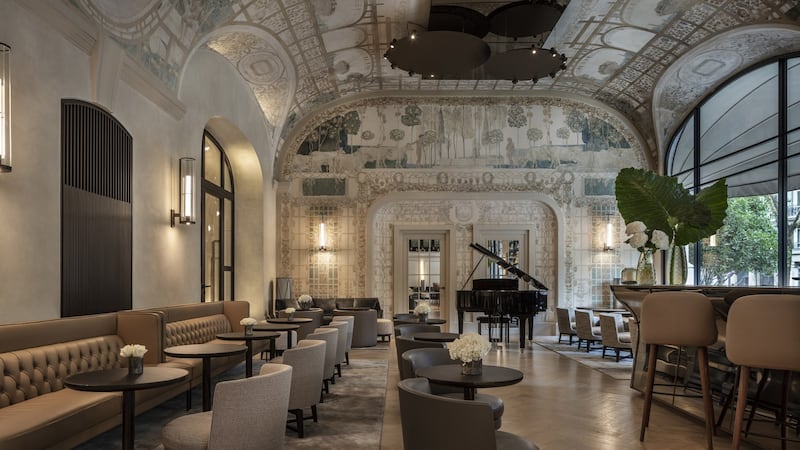
A banquette can also be used to help form different zones within an open-plan space. It can help delineate between the working kitchen unit space and the eat-in area, as illustrated by this simple set-up by Kube. Priced from €900 per linear metre, it’s a good small home interpretation. If you have a bit more space, then the L-shaped design featuring tongue and groove panelling by UK-based Day True for a house in Chelsea could be a consideration.
Another Ventura project in Foxrock shows a luxurious approach. Fabricated by Ballymena-based Whyte & Wood, its C-shape seat is upholstered in easy-to-clean eco leather and its back is curved to counter height so you won’t knock your head off the stone worktops. The seat also appears to float so it banishes visual floor clutter too. You can also install a banquette at the end of a kitchen island or counter. If the seat is built to the floor, it may become a trip hazard for the clumsier among us so consider legs or a floating option instead. This won’t give you secret storage but will look less bulky.
If installing in a low-ceilinged area, you can create the illusion of height by using vertical bands of fabric to draw the eye up, especially if you take the padding all the way up to the ceiling top, Knott says.
“If using it in an open-plan setting then a contrasting colour on the back of the banquette seat, the one that is facing out into the room, can act as a vertical half-wall to help divide the room,” he suggests.
It’s a seating style that can be used to great effect in a living area, especially one within a larger open-plan space. The lobby of the newly opened Hoxton in Rome, designed by Tom Parker and Andy Goodwin of UK-based Fettle Design, demonstrates this well.
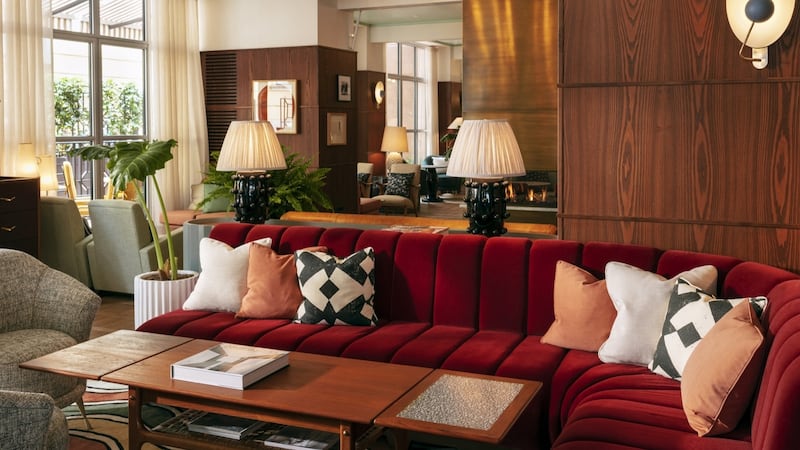
In Archer’s Wood, a new homes scheme in Delgany, showhouse designer Moya Farrell of Avenue Interior Design has made great use of unused space in a box bay windowed living room. She has filled in this space with a banquette window seat that doubles as a second sofa and takes up little floor room.
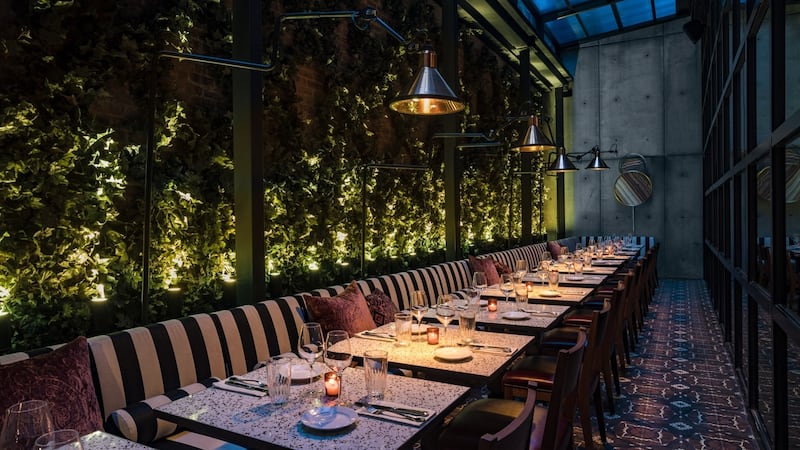
You can also take the idea outside. The Moxy Chelsea, in New York, designed by Yabu Pushelberg, uses chalk-striped fabric on a long line of seating to maximise bums on seats while this simple clapboard exterior wall, painted in an off-white by Little Greene, conjures up an east coast American Hamptons vibe. For this to work in an Irish climate, the cushioning will need to be removable so you can bring indoors to prevent damp creeping in.
Websites
jocfurniture.com
ventura.ie
hotellutetia.com
kubeinteriors.com
whyteandwood.com
thehoxton.com
avenueinteriordesign.ie
moxychelsea.com
littlegreene.ie












